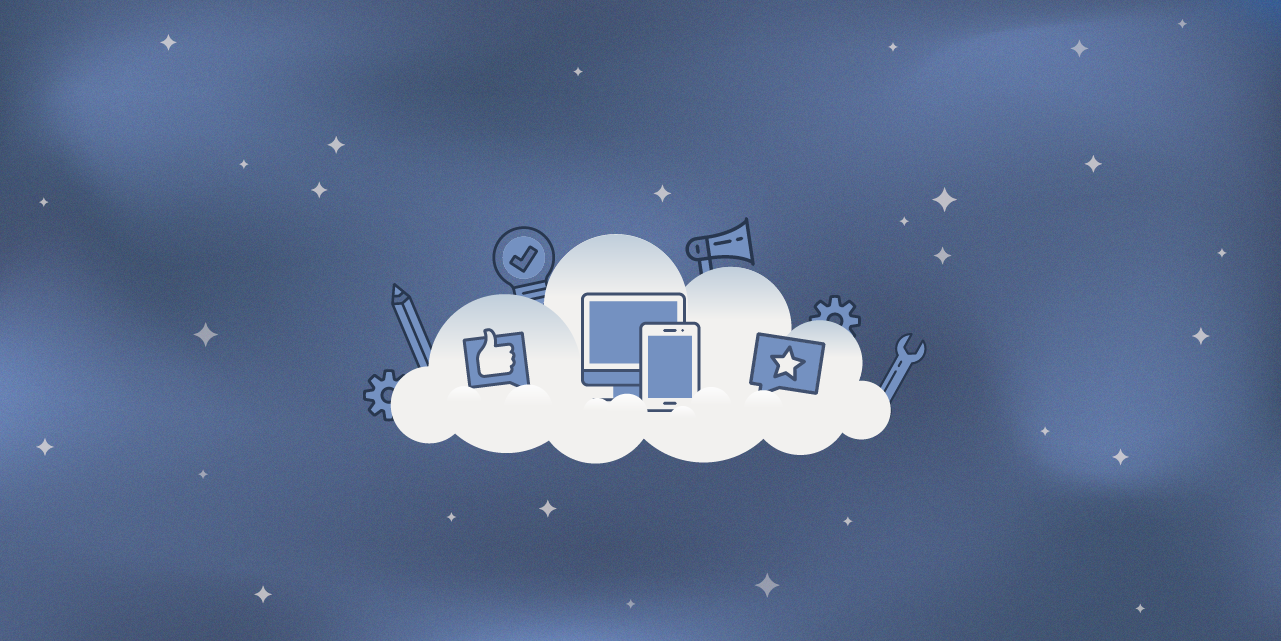SAAS Development – A Guide for Founders
Codelation’s Quarterly Team Meeting
October 14, 2021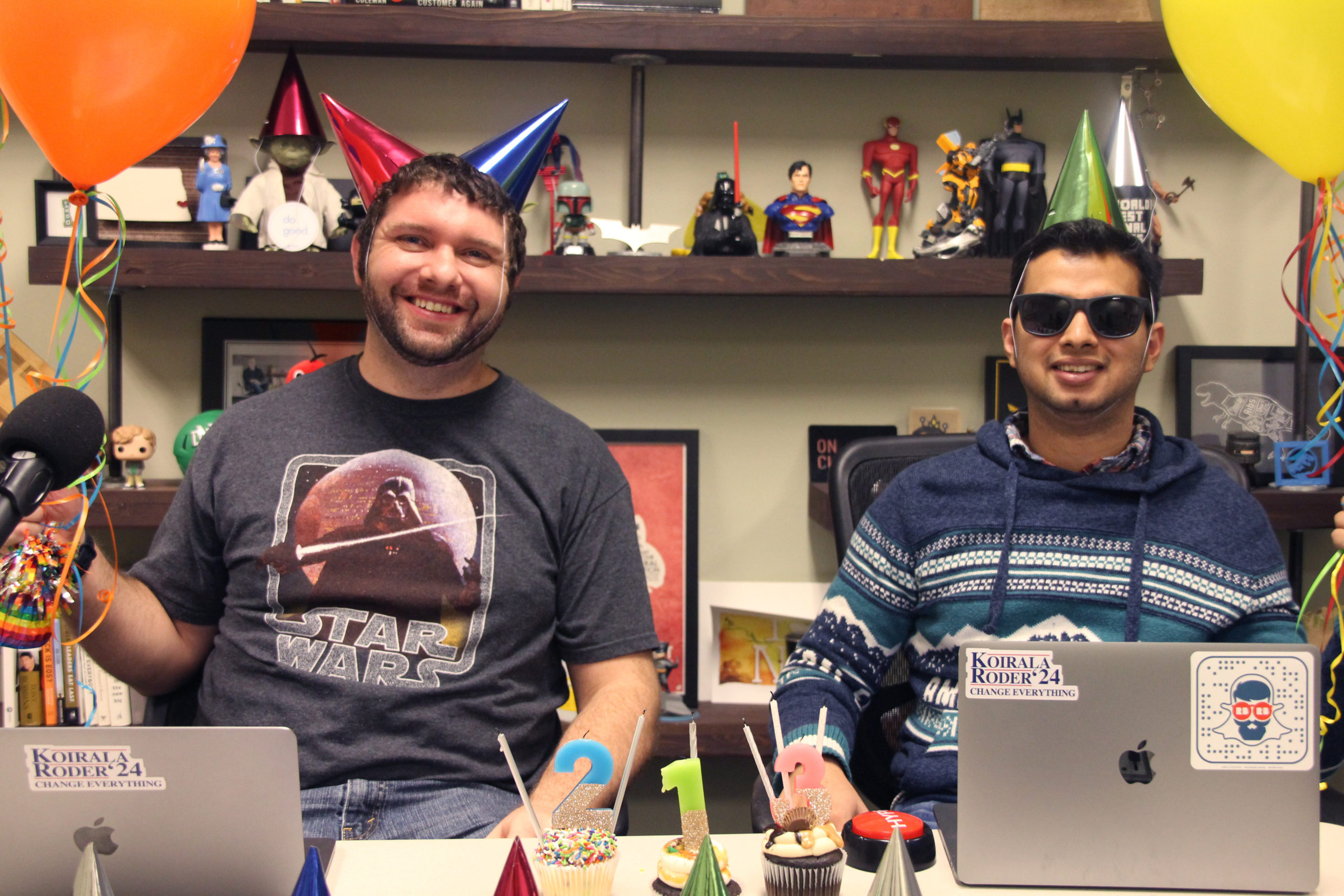
Festive Social Media- A Guide to Being Professional During the Holidays
October 27, 2021Before You Begin
This is a comprehensive guide to navigating the world of validating, developing, and launching a software as a service (SAAS) development project and it isn’t for the faint of heart. SAAS applications can be a tricky problem as they require product desire before it even exists, but it can also be the most rewarding, bringing in thousands of dollars in revenue for the product owner. In return, it is helping other businesses run smoother and better. The purpose of your software is to provide a service to another business who will in exchange compensate you to use your program. The most crucial thing to remember is that SAAS apps are different from other custom development apps. Unlike other types of apps you have to market, educate, and ultimately get a user to pay for services to make a profit and if that isn’t hard enough, you need to keep the user engaged so that they don’t churn. In this type of development, software vendors and creators host and maintain servers of data that can be used by a variety of potential clients.
Validating your SAAS Idea
When validating these ideas, the premise is similar to other apps but much stronger: would people pay for this? If you are creating a custom software for people to use as a service to themselves and in return you are charging them for it, you have to ask them and yourself if it’s really worth it for both parties to invest money into this.
Validating your idea is even more important with an SAAS project as your success solely depends on having consumers pay for your software to use it, if no one wants to pay for it, no one will use it.
In the validation stage it’s key to understand that you might have to change your idea based on the feedback you receive from people you talk to. The idea you had in your head might not solve the problem in the way people need it to or it might not be as cost effective as you foresaw it being. This is why the validation stage is important, because if these kinks and weak points in your idea aren’t worked out in this stage then you’ll waste time and money later on developing things that no one wants to pay for.
Perform Market Research
When talking with consumers about your idea, one thing you should be looking for is real intent or interest to buy your product. Having ‘fake fans’ can be very harmful for your business and give you a false sense of security for your idea. People who are actually interested in what you have to say and will back that up with a commitment to purchase are most likely to support your idea in the future over people who just like to listen to ideas.
The people you do want are people who have real buying interest. Now, you might ask yourself how you gauge that without an actual product yet, there’s a few options for you.

-
- Have them sign up for an email list for product updates giving them inside access to the development process and release dates. This also gives you an open line of communication for feedback to the problem statement and other features of the product. (Mailchimp, ActiveCampaign, and Constant Contact are examples of email marketing services that you can use)
-
- Ask them if they would be a prototype tester once the prototype is out or if they would do beta testing during the development process.
-
- Let them sign up for a pre-order list or early access list so they can be the first to get it when it’s released.
If you can do these things to get people on board with your project and create your first 100 allies, then you can prove you have a valid idea with real supporters who want to invest their time and money into your product.
Interested in learning more about validating your software and performing market research? Read our article How to Validate Your Software as a Service Idea.
The SAAS Development Process
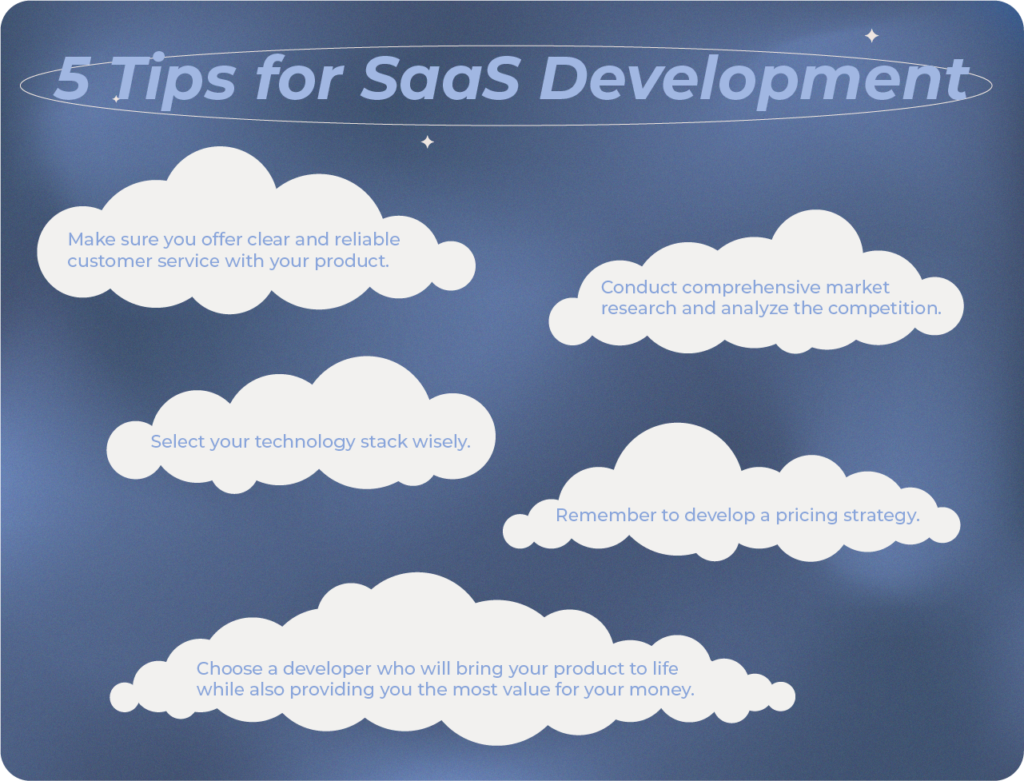
SaaS Lifecycle: To understand the SaaS Development Process, we have to acknowledge the Saas Lifecycle. The SaaS Lifecycle has four individual phases that make up the development of SaaS.
-
- The Startup Phase: In this phase, an in depth dissection of all components within the service is crucial to validating the software. A revenue model and business plan are also developed at this point to ensure legitimacy. A revenue model lays out the groundwork for generating an income. It breaks down who and what is being paid and in what quantity. A business plan ensures that goals are established as well as the means of achieving those goals within a designated time frame. Another important element is the development of a prototype as well as the defining of a MVP according to the product owner. It is important to remember that a prototype and a minimum viable product are not one in the same. It is also pivotal to evaluate the differences from competitors and capitalize on those attributes. Once all problems have been identified and the complete validation process has taken place, the final step is testing and quality assurance. While the startup phase can be lengthy, it is necessary to ensure your first customers will be satisfied.
-
- The Customer Phase: Identification of the target market not only ensures the market exists but that there is desire for the product. Niching down on the target customer as much as possible paints a picture of who the service is being built for and consequently creates a higher quality product. Once the target audience is identified to the fullest extent, the next step is A/B testing. A/B testing is experimenting with different designs to see how your target market reacts and then analyzing the data to increase sales, retention, and user engagement. You can A/B test your product’s landing page too. Having two versions allows you to test marketing copy and funnel creation so see which your audience reacts better to. Finally, after identifying the target audience and testing their preferences, generating leads and compiling a customer database is the last step in this phase. It is essential to measure target audience retention, satisfaction, engagement and even your approximate recurring revenue.
-
- The Growth Phase: Keeping in mind that consistent organic growth is much better than a lightning fast accumulation of an audience, growth is beneficial regardless. However, with growth comes the demands of the customers. Being prepared to strengthen your databases, functionalities, and customer service around the SaaS is imperative with growth. With every customer gained, contemplate what improvement could be made to better their experience.
-
- The Success Phase: A culmination of customer satisfaction, team development, and company upgrades are all components of success. Sustaining success includes the retention of customers, and the overall growth in quantity of the customers. The employees and teams within the company will also increase, therefore increasing costs. However, the growth in revenue will make up for an increase in costs and resources. The main component to stable success is to never stop attempting to improve and upgrade the service or company. However, avoid getting caught up in the mindset that success equates satisfaction. In order for yourself, your team, and your customers to be 100% satisfied, pretend as though you have not yet achieved success and find ways to improve the experience for all of those involved.
With the SaaS lifestyle and phases understood, we will now examine the benefits and advantages of SaaS vs. other custom apps. Read more about the process in our article Developing Your SAAS Tool.
SaaS Benefits + Advantages
The extreme flexibility and unlimited resources that SaaS provides is eons ahead of traditional development and services. A cloud is a network of servers that can be located and accessed from around the globe. Even if one server goes down, your application will remain online. This flexibility fuels the scalability of the SaaS as well. If the requirements increase, you can upgrade within a few clicks. Like upgrades, downgrades are also possible if deemed necessary.
These applications can also be utilized across multiple devices with a single login and are instantly updated online rather than operating under a singular license. This creates more ease with updates and decreases the overall costs. It is also very important to grant access to your SaaS service on mobile devices. People check their phones at least five times per hour and even up to eighty times per day. That much time with users’ eyes on their screens, it only makes sense to prioritize the mobile experience first!
The fixed payment features are comforting to those that are careful with their money. Paying for only the time you use and the amount of data you store makes the user feel that their purchases are validated and transparent. A trial period also lets users see whether or not the service fits their needs. When users are able to subscribe to the software without paying any money up front or having to purchase the software and install it on their device, they are immediately more satisfied. Also, this pay-per-use model can actually encourage usage as people know they are actively paying for the service. The lack of additional expenses in combination with validated purchases, makes SaaS more advantageous and satisfactory.
Lastly, SaaS addresses some of the global man-made issues. The software is 100% digital and the lack of hardware significantly decreases the carbon footprint of the service. Avoiding traditional means of storing data decreases the amount of overall energy needed as well. One of the best ways to satisfy and retain customers is through excellent human relations in combination with customer service. SaaS allows you to focus on satisfying customer needs rather than constantly seeking new customers. This is important as you are 50% more likely to sell to an existing customer rather than a new customer. Using the blockchain provides greater security as the database is decentralized. Due to the virtual significance and multi-occupancy features, SaaS are significantly more difficult to hack. SaaS has some of the highest level of protections and security making it essentially impossible to breach. High levels of security also increases transparency between you and your customers which often results in increased loyalty.
Choosing a Developer
Choosing a developer for your service will greatly impact not only the process of development but the overall experience of the service. The SaaS development rates vary from country to country and outsourcing to certain countries can be more spendy than others. The U.S. & Canada average $150 to $180 per hour and are typically the most expensive countries to outsource to. Europe is divided into three specific regions; north, west, and east with western and northern Europe averaging about $90 to $120 per hour and eastern Europe being slightly cheaper at $40 to $75 per hour. Ukraine, Poland and Belarus are some of the cheapest countries in price while maintaining quality. The cheapest way to get your service developed is to outsource to either Asia or South America which both average about $15 to $45 per hour.
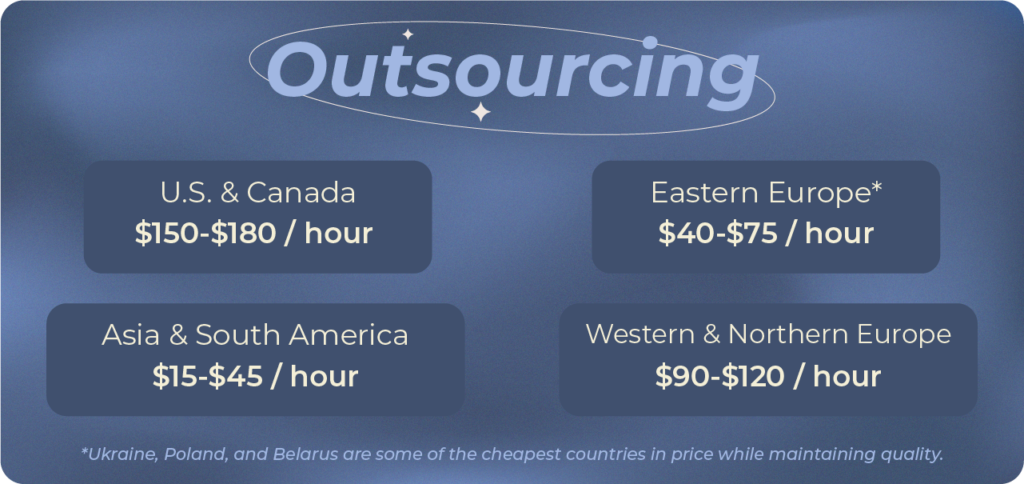
Launching & Marketing your Software or SaaS
Some of the final steps in getting your software into the hands of users includes making a launch strategy and a marketing plan to support it. First impressions are everything so it’s important to take the time to make your software’s debut a hit!
Launching Best Practices
You can’t just show up online one day and expect your product to be found by customers. Let’s roll up our sleeves and talk about what you need to consider before putting your software out there. We’ve set aside some hot tips and tricks to get you geared up for success. Some of these can be completed pre-launch and others happen in conjunction with your launch.
Always Deliver Value
Delivering value to your customers should be first and foremost during your launch. As much as you might be locked onto getting dollars in your wallet, focusing on bringing value first will end up leaving a great first impression and attracting more customers.
Even little things can make quite the difference in how a customer thinks about your product and brand. Here are a few examples of ways to offer value to them:
-
- Offer prompt customer service. If a customer is having an issue with your software or has any questions, make it a priority to get back to them as soon as possible whether it be by phone, email, or other means.
-
- Make your onboarding process smooth and simple. Present tips on how to get the most out of your product in an email campaign or social media.
-
- Be transparent and honest. Let users know about downtimes for maintenance, apologize for any inconveniences made by any mistakes, and let customers know about any upcoming improvements and changes to your software.
Any way you can make your user’s experience with your software a little more special, you’re adding value. Get creative, add personal touches, and be responsive to put yourself ahead of the competition.
Timing
Getting caught up in the hype of taking your software to market is very common. It’s better to take extra time to be prepared rather than get caught up in the excitement and launch prematurely. Taking the extra time to check over the onboarding experience and double checking for any bugs within your software can prevent making a bad impression. Falling short on expectations can leave a bad taste in your customer’s mouths.
Making sure your app is launching at an opportune time can make a difference in your initial push as well. It probably would be a poor choice to launch on a busy holiday weekend because no one will have the time of day to be looking into your new software. The same thinking goes for seasons. If you were launching a product that was primarily used seasonally, like a garden planner software, it would be ideal to launch in late winter or spring just as everyone is gearing up to get planting. Capitalize on hitting the market at just the perfect time your potential customers will be looking for their next solution!
Know your Competition
Unless you’ve got an idea that is entirely groundbreaking in your industry, you’ll probably come across at least one person offering a similar software solution. Gaining an understanding of your competitors and the landscape can give you an edge in setting yourself apart from the crowd.
Interviewing potential customers can help give you valuable, first-hand insight into any competition. Ask them about alternative solutions they’ve tried or are currently using. What do they have to say about them—either positive or negative? Note any pain points or highlights to learn how you can beat out your competitors. Keeping up to date with your rival software’s moves will help make sure that you don’t get left in the dust.
Want to learn more about checking out the competition? Read our blog “Who Else Has Your Idea?: Scoping Out the Competition” here!
Analyze the Buyer Journey
Get ready to put yourself in another person’s shoes! A great tip for before launch is to walk through a potential buyer’s journey to downloading your software. Their journey may begin at a paid ad, your website, or your social media page. How do they end up downloading or buying your software? There are many different paths a buyer could come down, but try to analyze the most popular routes for anything that could lead a customer to break off from the journey. An inactive social media page, a slow loading website, or not many reviews to be seen are just a few things that might turn away a viable customer. Give any paths that seem to lose people along the way a little facelift. Continue to nurture any paths that you see bringing in the most conversions to increase your reach!
Want to Check Out More SaaS Launching Best Practices?
For even more tips and tricks for launching SaaS software, read our article Launching & Marketing Your SAAS.
Marketing Strategies
Marketing can give a huge boost to your fans and following, not to mention an increase in downloads and sign ups at your launch and beyond. Let’s run through a few options on how to market your software or SaaS.
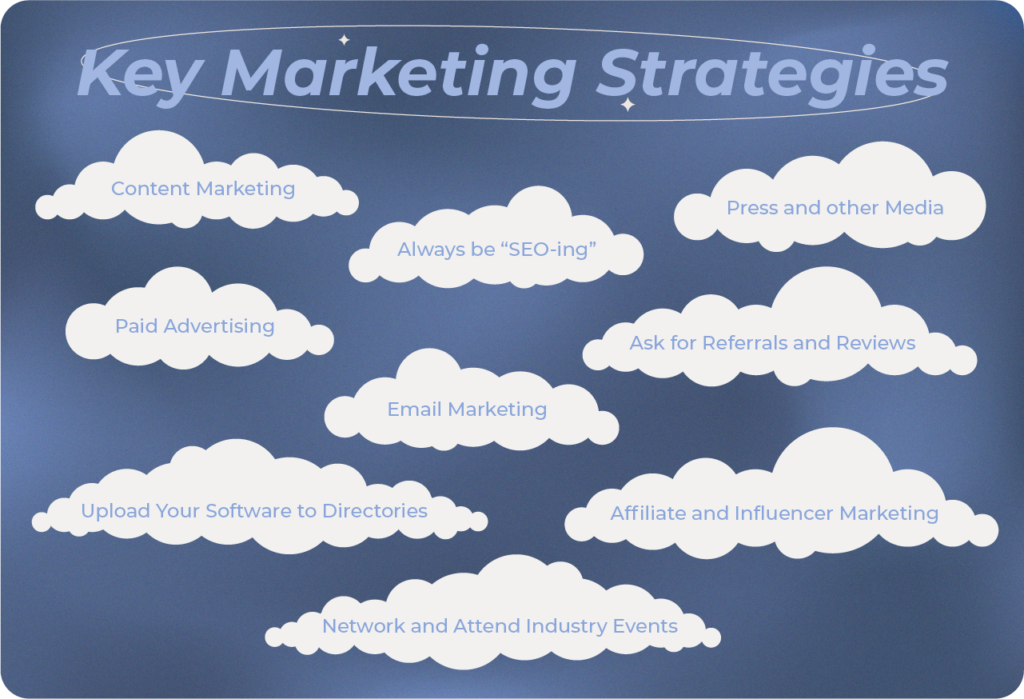
Content Marketing
Content marketing tells your audience what your product does and why it’s needed. There are so many types that you can use to grab people’s attention. Blogging, hosting livestreams, writing an eBook, making a datasheet, doing workshops, starting a video series, designing infographics—the options are endless. Anything unique that grabs and holds your specific audience’s attention is good content to be producing.
Affiliate & Influencer Marketing
Gaining the trust of potential clients by leveraging someone else’s’ brand and audience is a trick used by many these days. Think of a few blogs, brands, local leaders, or social media celebs that you could partner with, whether they be potential users or thought leaders in the target market. Start a discussion with those that you find to be a good fit for your product. Keep in mind that follower or reader count is not everything, engagement on posts is entirely more valuable. Typically you provide an ad or special link that will track how many people come from their pages and then you give them a commission for each conversion. While working with an influencer or affiliate you may also offer free access to your software as part of the deal. People care quite a lot about their favorite influencers’ opinions and recommendations, and that recommendation could be for your software!
Paid Ads
Advertisements can work wonders if you know how to target the correct crowd. Test the waters at first and try placing ads across multiple channels (social media platforms, display ads, ephemeral content, video content, etc.) Try out any channels where your target audience lives! After your initial tests, note which have the highest conversion rates and focus on those going forward.
Taking extra time to develop quality ads is definitely worth the work. Having a unique campaign can make a lasting impression on potential customers and also drive engagement on your social media. They can really help you stand out amongst the crowd of marketing online!
Upload your Software to Directories
An easy way to get some eyes on your software is to add it to download sites and directories. Some directories allow you to upload web or cloud-based SAAS as well even though they don’t have a downloadable package. Users can read information about your software and also leave reviews. Polish your profile and continue to be active on these sites for best conversion rates. These directories are also great for SEO as they create back-links to your site.
Interested in Learning More SaaS Marketing Strategies?
For even more tips and tricks for marketing software, read our article Launching & Marketing Your SAAS.
